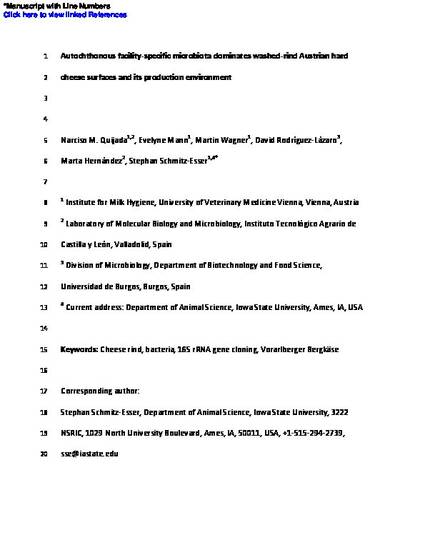
Cheese ripening involves the succession of complex microbial communities that are responsible for the organoleptic properties of the final products. The food processing environment can act as a source of natural microbial inoculation, especially in traditionally manufactured products. Austrian Vorarlberger Bergkäse (VB) is an artisanal washed-rind hard cheese produced in the western part of Austria without the addition of external ripening cultures. Here, the composition of the bacterial communities present on VB rinds and on different processing surfaces from two ripening cellars was assessed by near full length 16S rRNA gene amplification, cloning and sequencing. Non-inoculated aerobic bacteria dominated all surfaces in this study. VB production conditions (long ripening time, high salt concentration and low temperatures) favor the growth of psychro- and halotolerant bacteria. Several bacterial groups, such as coryneforms, Staphylococcus equorum and Halomonas dominated VB and were also found on most environmental surfaces. Analysis of OTUs shared between different surfaces suggests that VB rind bacteria are inoculated naturally during the ripening from the processing environment and that cheese surfaces exert selective pressure on these communities, as only those bacteria better adapted flourished on VB rinds. This study analyzed VB processing environment microbiota and its relationship with VB rinds for the first time, elucidating that the processing environment and the cheese microbiota should be considered as microbiologically linked ecosystems with the goal of better defining the events that take place during cheese maturation.
Available at: http://works.bepress.com/stephan-schmitz-esser/44/

This is a manuscript of an article published as Quijada, Narciso M., Evelyne Mann, Martin Wagner, David Rodríguez-Lázaro, Marta Hernández, and Stephan Schmitz-Esser. "Autochthonous facility-specific microbiota dominates washed-rind Austrian hard cheese surfaces and its production environment." International journal of food microbiology 267 (2018): 54-61. Posted with permission.